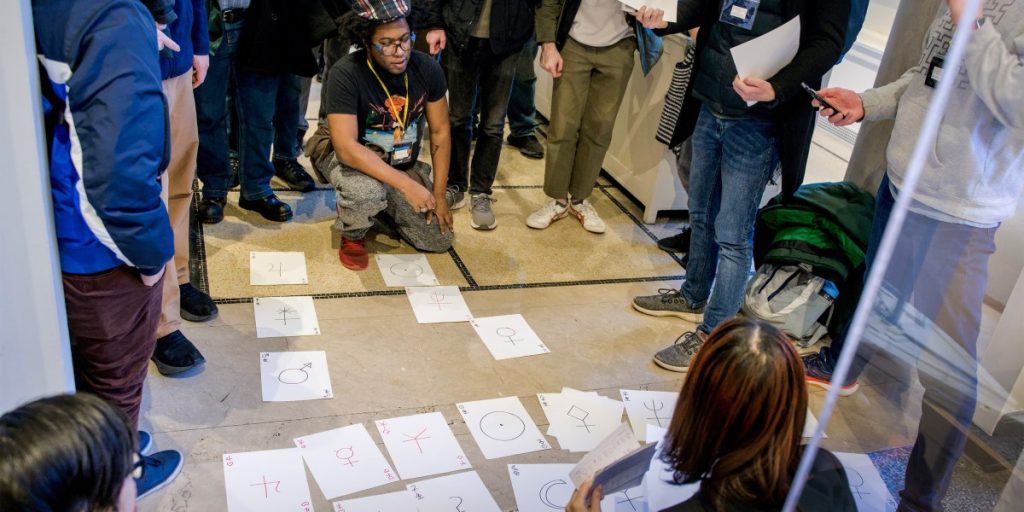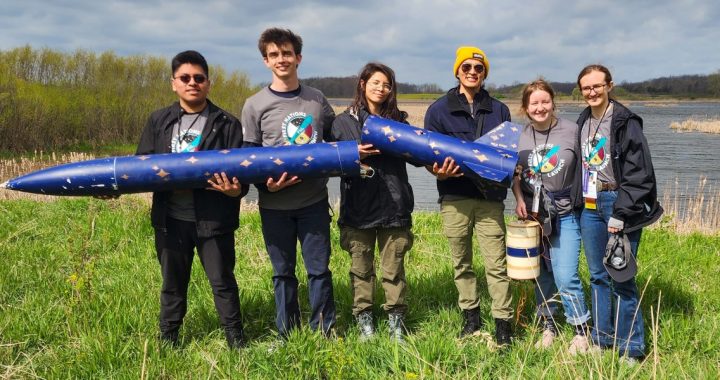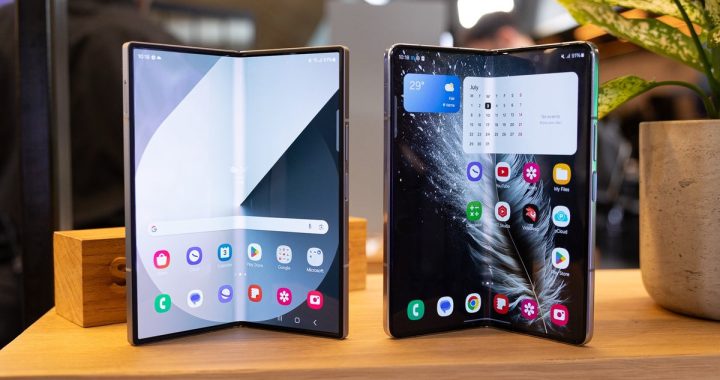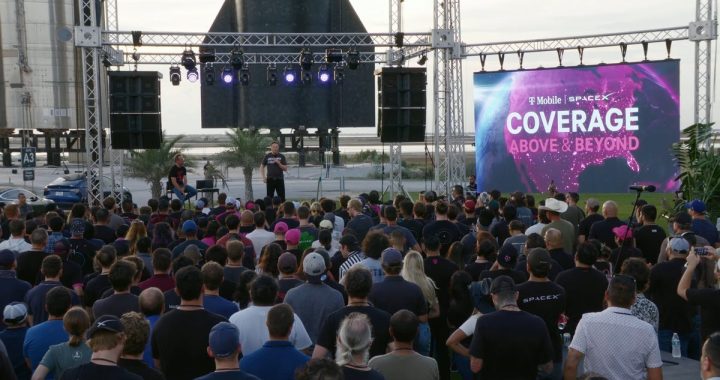More puzzles, less sleep | MIT Technology Review

The “hydra” we’re dealing with is a metapuzzle: We have to find a way to use the solutions from other puzzles that we’ve already solved to extract one more answer. If we solve this one, we’ll be rewarded with more puzzles.
We know we need to diagram the answers for this round of puzzles as a binary tree. In keeping with the hydra metapuzzle’s mythological analogue, every time we solve one puzzle, two more branch off until we have a diagram five levels deep. We’re still missing answers from several unsolved puzzles that would help us figure out how the diagram works and how to extract an answer to the metapuzzle. The diagram we’ve drawn, in green chalk, gets more chaotic with every addition, erasure, and annotation we squeeze onto the overcrowded chalkboard. But we can sense that we’re just one “aha!” away from a solution.
MIT’s Mystery Hunt has been challenging puzzle enthusiasts every year since Brad Schaefer ’78, PhD ’83, wrote 12 “subclues” on a single sheet of paper as a challenge for friends during Independent Activities Period (IAP) in 1981. The answers led solvers to an Indian Head penny he had hidden on campus. Today’s Hunts are still built around that basic concept, but what constitutes a challenge has changed over four decades. One of the clues from the original 1981 Hunt is just a missing word in a quote: “He that plays the king shall be _____; his majesty shall have tribute of me.” It’s easy to solve today with Google, but in 1981, even if you knew it was Shakespeare, if you didn’t notice the subtle hint that you should look for a character referring to a play within the play, it might have taken a few hours of skimming the Bard’s collected works to find the answer.

JADE CHONGSATHAPORNPONG ’24/MIT TECHNIQUE
We add a few more solutions to the hydra diagram over the next few hours. Eventually someone notices that all the answers in the fifth level of the diagram seem to have an odd prevalence of Ls and Rs. This is the “aha!” moment: They tell us how to navigate the binary tree. From the first node at the top of the tree, we follow the Ls and Rs in the order they appear in each of the 16 solutions on the fifth level. Take the left branch, then right, then left again, landing on a word that starts with H. The second fifth-level answer leads us to a word that starts with E. Repeating the process with all 16 answers spells out an apt way to deal with a hydra: “HEADTOHEADBATTLE.” (Puzzle solutions are traditionally written in all caps with no spaces or punctuation.) Those of us who’ve been tackling the puzzle take a moment to enjoy our victory before splitting up to find new puzzles to work on.
Some elements of the Mystery Hunt are hard to describe, the kind of must-be-seen ingenuity that also inspires hacks on the Great Dome and any number of above-and-beyond engineering projects showcased around campus every year. Most of the puzzles are utterly unique, although they do often incorporate logic and word problems as well as more mainstream elements like crosswords, sudoku, and Wordle. But almost anything can be turned into a puzzle. For example, chess puzzles might be combined with the card game Magic: The Gathering. Or solvers could be asked to organize a Git repository with 10,000 out-of-order commits (that is, find the correct sequence of 10,000 changes to a file as it was tracked in a version control system), identify duets from musicals, or draw on their knowledge of pop culture trivia.
For most of its history, the Mystery Hunt had little official status on campus. By tradition as much as any organizational effort, teams simply showed up in Lobby 7 on the Friday before the Martin Luther King Jr. holiday for the kickoff. In 2014, the MIT Puzzle Club was formed to help provide year-to-year continuity and other support, such as securing rooms for teams to work in and reserving Kresge Auditorium for the opening ceremonies. Puzzle Club also hosts other events, such as mini puzzle hunts and sudoku and logic puzzle competitions—which Becca Chang ’26, the club’s current president, says “has helped a lot with outreach to new students or anyone who might be interested in [puzzles].”
Technology has enabled the Mystery Hunt to grow and evolve in significant ways, and not just in terms of the kinds of puzzles that are possible. Through the mid-1990s, a single person could take on the responsibility of writing and running the event. Today it’s a yearlong commitment for the winning team to design the next year’s Hunt. Doing so requires managing creative output and technological infrastructure that rival those of a small business. Duties include spending thousands of hours writing and testing puzzles, constructing physical puzzles and props, and building a dynamic website that can withstand the huge influx of puzzle-hungry visitors.

JADE CHONGSATHAPORNPONG ’24/MIT TECHNIQUE
Just organizing a team of solvers can be a major undertaking, especially now that more and more participants are joining remotely. Anjali Tripathi ’09, who started the team I’m Not a Planet Either in 2015, got her introduction to puzzle hunts through a miniature Mystery Hunt that Simmons Hall runs for first-years. After tackling the main event with the Simmons team on campus as an undergrad, she participated remotely for the first time in 2010. “I was abroad in England and still wanted to do Hunt, and I remember how hard that was,” she says. The team “had no infrastructure for it.”
#puzzles #sleep #MIT #Technology #Review








